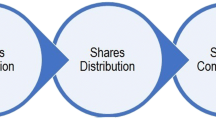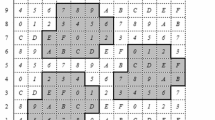Abstract
In comparison with traditional secret image sharing (SIS), extended secret image sharing (ESIS) can encrypt the secret image into several meaningful shadow images rather than noise-like shares, which both decrease enemies’ suspects and make them more manageable for participants. However, a majority of current ESISs are based on a combination between SIS and steganography, which result in the limited performance such as the small capacity of secret information and the large cost for decryption. In this paper, we propose a (k, n) threshold extended polynomial-based ESIS, namely EPSIS, completely based on Shamir’s classic PSIS without the help of steganography. Firstly, novel concepts, such as the sharing map and sharing pool, are defined to reconstruct the sharing and recovery phases of PSIS; secondly, the secret image and halftone binary cover images act on the sharing phase to generate meaningful grayscale shares from the novel view of PSIS based on the sharing map; finally, in order to achieve the same effects but without the huge sharing map, a filtering procedure for appropriate shared values is added into the sharing phase of natural PSIS, which aims to make the most significant bit of pixel in each share equal to bit in corresponding binary cover. In comparison with current ESISs, the proposed EPSIS not only has advantages in the traditional properties, such (k, n) threshold, capacity, visual quality and computational cost, but also owns two unique properties about covers, including no restrictive requirements on the selection of covers and reversible recovery of cover with the single related share. These significant properties are beneficial for searchable encryption in the area of cloud storage. Furthermore, the security condition of the proposed EPSIS is discussed in detail, and then simulations are provided to verify the security and effectiveness.







Similar content being viewed by others
References
Ateniese G, Blundo C, De Santis A, Stinson DR (1996) Visual cryptography for general access structures. Inf Comput 129(2):86–106
Ateniese G, Blundo C, Santis AD, Stinson DR (2001) Extended capabilities for visual cryptography. Theor Comput Sci 250(1-2):143–161. https://doi.org/10.1016/S0304-3975(99)00127-9. http://www.sciencedirect.com/science/article/pii/S0304397599001279
Cheng TF, Chang CC, Liu L (2017) Secret sharing: using meaningful image shadows based on gray code. Multimedia Tools and Applications 76(7):9337–9362
He J, Lan W, Tang S (2017) A secure image sharing scheme with high quality stego-images based on steganography. Multimedia Tools and Applications 76 (6):7677–7698
Huynh NT, Bharanitharan K, Chang CC (2015) Quadri-directional searching algorithm for secret image sharing using meaningful shadows. J Vis Commun Image Represent 28:105–112. https://doi.org/10.1016/j.jvcir.2015.01.011
Li P, Ma PJ, Su XH, Yang CN (2012) Improvements of a two-in-one image secret sharing scheme based on gray mixing model. J Vis Commun Image Represent 23 (3):441–453
Li P, Yang CN, Kong Q (2018) A novel two-in-one image secret sharing scheme based on perfect black visual cryptography. J Real-Time Image Proc 14(1):41–50
Lin PY, Chan CS (2010) Invertible secret image sharing with steganography. Pattern Recogn Lett 31(13):1887–1893
Lin SJ, Lin JC (2007) Vcpss: a two-in-one two-decoding-options image sharing method combining visual cryptography (vc) and polynomial-style sharing (pss) approaches. Pattern Recogn 40(12):3652–3666
Liu F, Wu C (2011) Embedded extended visual cryptography schemes. IEEE Trans Inf Forensics Secur 6(2):307–322
Liu F, Yan WQ (2014) . In: Visual cryptography for image processing and security: theory, methods, and applications. Springer. https://doi.org/10.1007/978-3-319-09644-5
Liu F, Wu CK, Lin XJ (2008) Colour visual cryptography schemes. IET Inf Secur 2(4):151–165
Liu X, Wang S, Sang J, Zhang W (2018) A novel mapping-based lossless recovery algorithm for vss. J Real-Time Image Proc 14(1):51–61. https://doi.org/10.1007/s11554-016-0644-5
Liu X, Wang S, Sang J, Zhang W (2017) A novel lossless recovery algorithm for basic matrix-based vss. Multimedia Tools and Applications (2):1–16
Naor M, Shamir A (1994) Visual cryptography. In: Workshop on the theory and application of of cryptographic techniques. Springer, pp 1–12
Ni Z, Shi YQ, Ansari N, Su W (2006) Reversible data hiding. IEEE Trans Circuits Syst Video Technol 16(3):354–362
Ou D, Sun W, Wu X (2015) Non-expansible XOR-based visual cryptography scheme with meaningful shares. Signal Process 108:604–621. https://doi.org/10.1016/j.sigpro.2014.10.011
Shen G, Liu F, Fu Z, Yu B (2016) Perfect contrast xor-based visual cryptography schemes via linear algebra. Des Codes Crypt 85(1):1–23
Shin SH, Jung KH (2016) Reversible secret image sharing scheme in encrypted images. Multimedia Tools and Applications 75(21):13,931–13,949
Thien CC, Lin JC (2002) Secret image sharing. Comput Graph 26(5):765–770
Wang Z, Arce GR (2006) Halftone visual cryptography through error diffusion. In: Proceedings - international conference on image processing, ICIP, pp 109–112. https://doi.org/10.1109/ICIP.2006.312384
Wang DS, Yi F, Li X (2009) On general construction for extended visual cryptography schemes. Pattern Recogn 42(11):3071–3082. https://doi.org/10.1016/j.patcog.2009.02.015
Weir J, Yan WQ (2009) Sharing multiple secrets using visual cryptography. In: IEEE international symposium on circuits and systems, pp 509–512
Weir J, Yan W (2010) A comprehensive study of visual cryptography. In: Transactions on data hiding and multimedia security V. Springer, pp 70–105
Wu X, Sun W (2013) Generalized random grid and its applications in visual cryptography. IEEE Trans Inf Forensics Secur 8(9):1541–1553
Wu X, Ou D, Liang Q, Sun W (2012) A user-friendly secret image sharing scheme with reversible steganography based on cellular automata. J Syst Softw 85(8):1852–1863. https://doi.org/10.1016/j.jss.2012.02.046
Wu X, Weng J, Yan W (2018) Adopting secret sharing for reversible data hiding in encrypted images. Signal Process 143:269–281
Yan X, Liu X, Yang CN (2015) An enhanced threshold visual secret sharing based on random grids. J Real-Time Image Proc 14:61–63. https://doi.org/10.1007/s11554-015-0540-4
Yan X, Wang S, Niu X, Yang CN (2015) Generalized random grids-based threshold visual cryptography with meaningful shares. Signal Process 109:317–333. https://doi.org/10.1016/j.sigpro.2014.12.002
Yan X, Wang S, Niu X, Yang CN (2015) Halftone visual cryptography with minimum auxiliary black pixels and uniform image quality. Digital Signal Processing: A Review Journal 38:53–65. https://doi.org/10.1016/j.dsp.2014.12.002
Yang CN (2004) New visual secret sharing schemes using probabilistic method. Pattern Recogn Lett 25(4):481–494
Yang CN, Chen TS, Yu KH, Wang CC (2007) Improvements of image sharing with steganography and authentication. J Syst Softw 80(7):1070–1076
Zhang X (2011) Reversible data hiding in encrypted image. IEEE Signal Process Lett 18(4):255–258
Acknowledgements
This project is supported by the National Natural Science Foundation of China (Grant No.61602491). Thanks for the anonymous reviewers’ constructive comments and suggestions.
Author information
Authors and Affiliations
Corresponding author
Rights and permissions
About this article
Cite this article
Liu, L., Lu, Y. & Yan, X. Polynomial-based extended secret image sharing scheme with reversible and unexpanded covers. Multimed Tools Appl 78, 1265–1287 (2019). https://doi.org/10.1007/s11042-018-6202-3
Received:
Revised:
Accepted:
Published:
Issue Date:
DOI: https://doi.org/10.1007/s11042-018-6202-3




